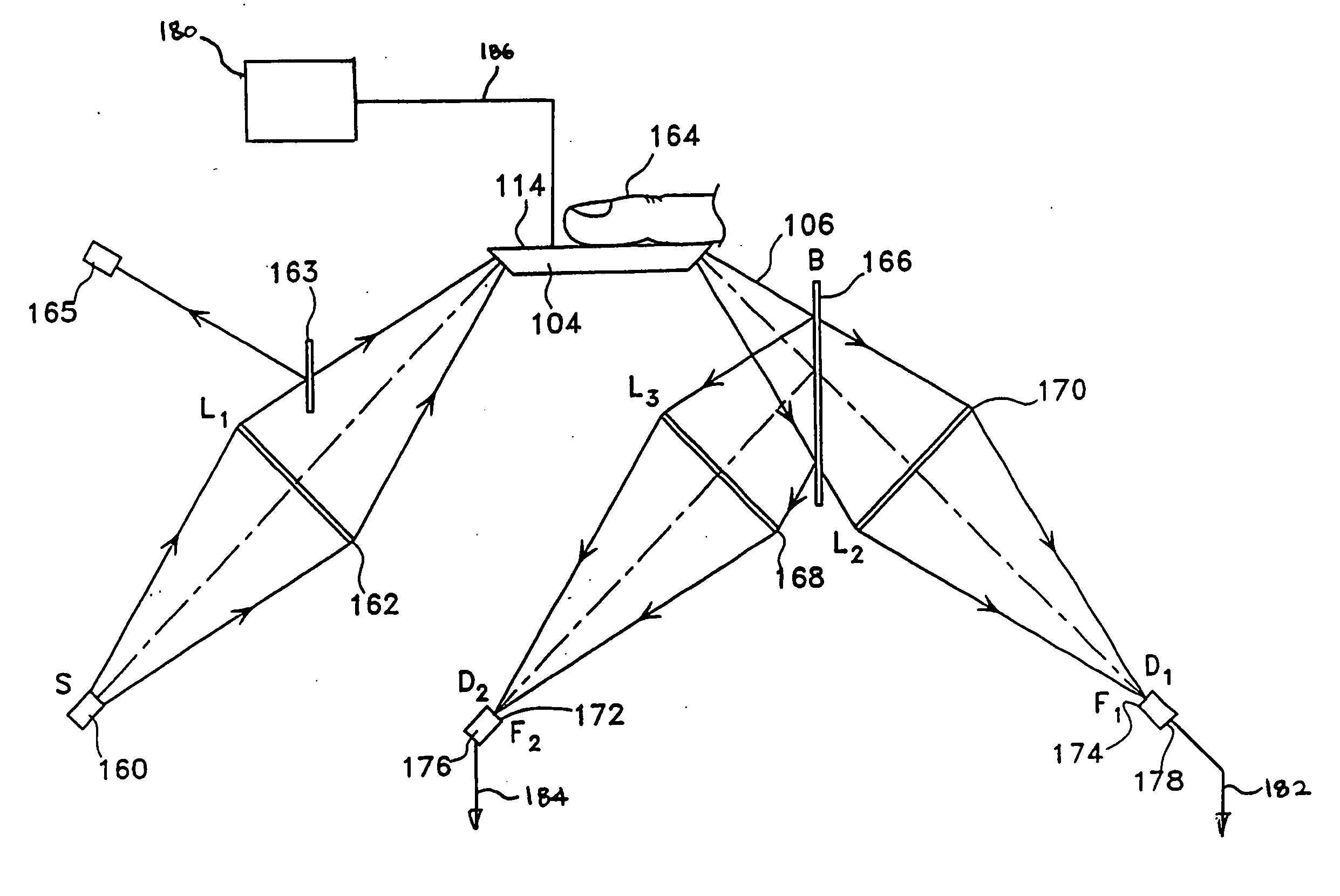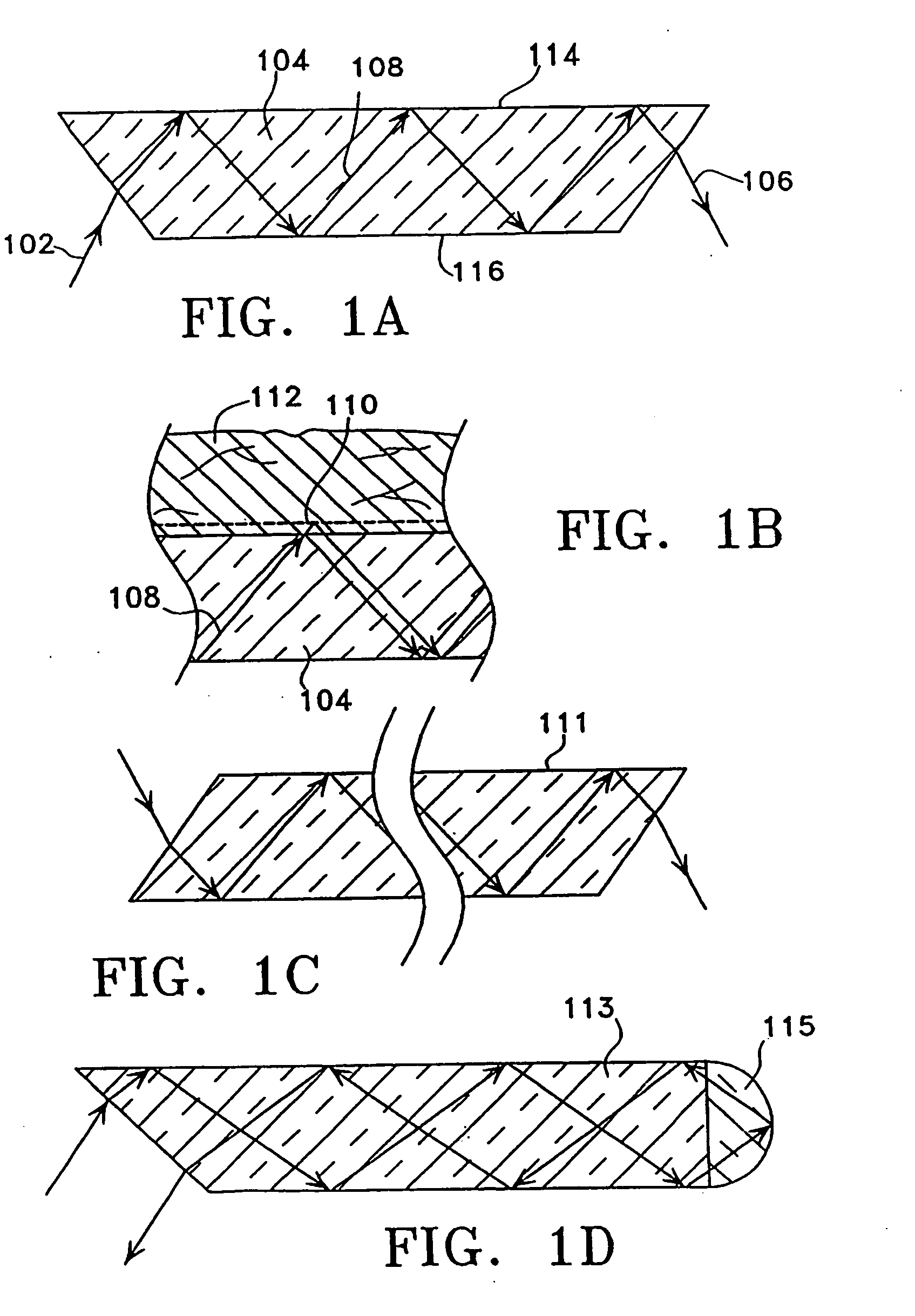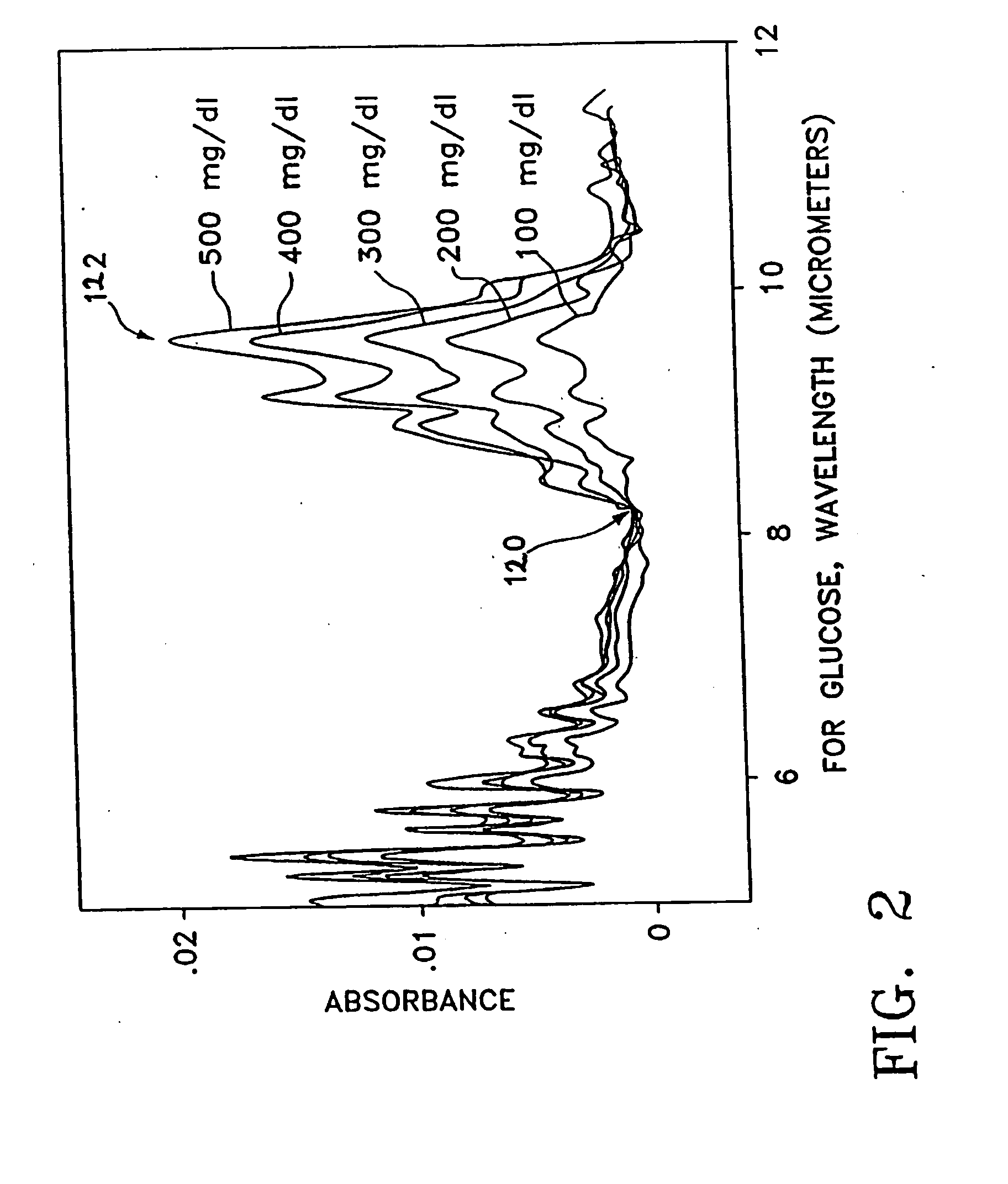Integrated device for non-invasive analyte measurement
a glucose measurement and integrated device technology, applied in the field of non-invasive glucose measurement devices, can solve the problems of inability to obtain frequent blood samples, inability to accurately measure glucose, and inability to achieve non-invasive methods of measuring glucos
- Summary
- Abstract
- Description
- Claims
- Application Information
AI Technical Summary
Benefits of technology
Problems solved by technology
Method used
Image
Examples
Embodiment Construction
[0048] The device in this invention uses infrared (“IR”) attenuated total reflectance (“ATR”) spectroscopy to detect and ultimately to determine the level of a selected analyte, such as, blood glucose, in the human body. Preferably, the inventive device uses an ATR procedure in which the size and configuration of the crystal permits a number of internal reflections before the beam is allowed to exit the crystal with its measured information. In general, as shown in FIGS. 1A and 1B, when an infrared beam 102 is incident on the upper surface of the ATR crystal 104—or ATR plate—at an angle which exceeds a critical angle ΘC, the beam 102 will be totally internally reflected within crystal 104. Each reflection of the beam within the ATR plate, and specifically against the upper surface 114, provides an incremental increase in the information about the composition of the sample 112 resting against that upper surface 114. The more numerous the reflections, the more likely accurate readings...
PUM
 Login to View More
Login to View More Abstract
Description
Claims
Application Information
 Login to View More
Login to View More - R&D
- Intellectual Property
- Life Sciences
- Materials
- Tech Scout
- Unparalleled Data Quality
- Higher Quality Content
- 60% Fewer Hallucinations
Browse by: Latest US Patents, China's latest patents, Technical Efficacy Thesaurus, Application Domain, Technology Topic, Popular Technical Reports.
© 2025 PatSnap. All rights reserved.Legal|Privacy policy|Modern Slavery Act Transparency Statement|Sitemap|About US| Contact US: help@patsnap.com



